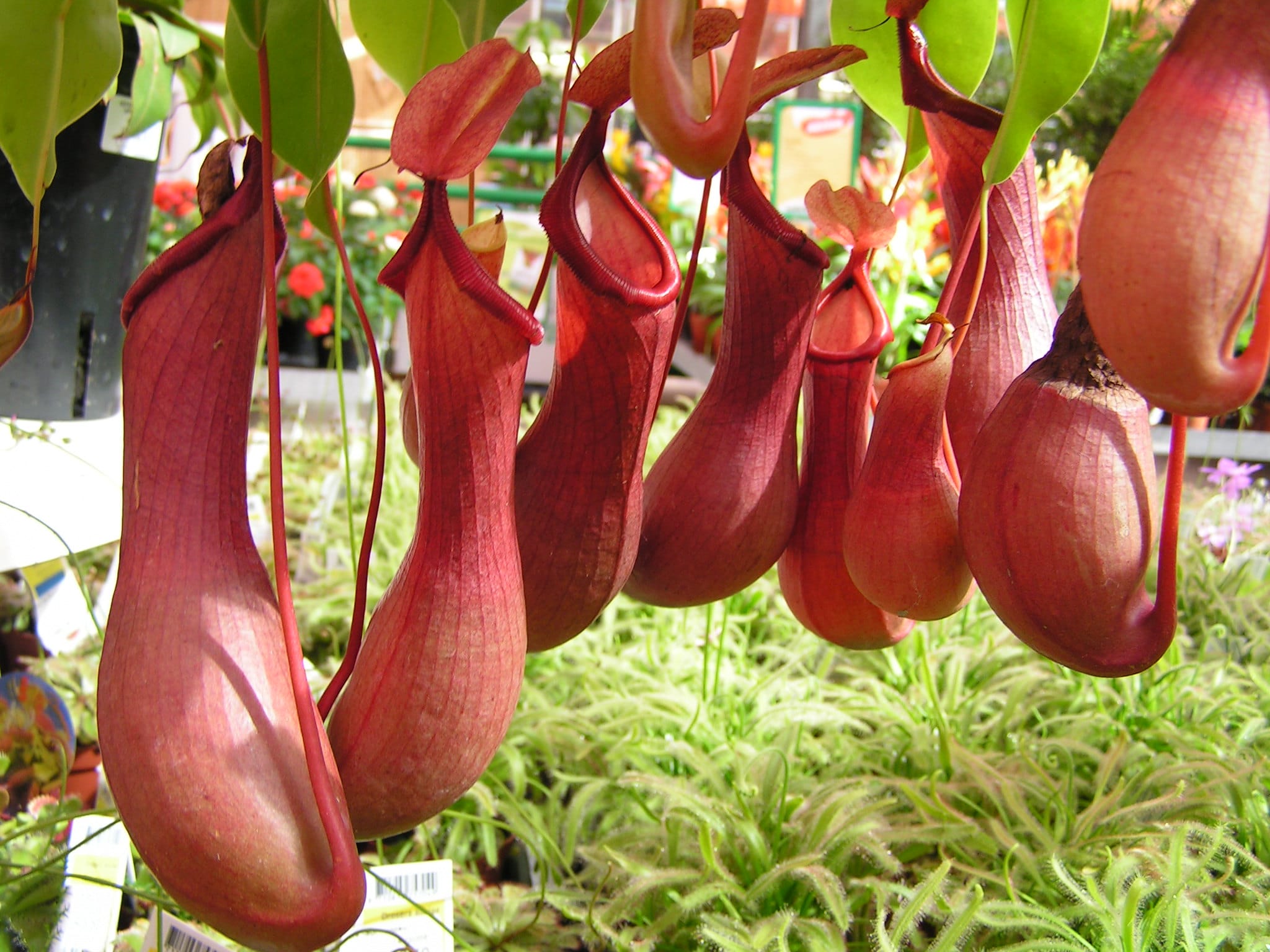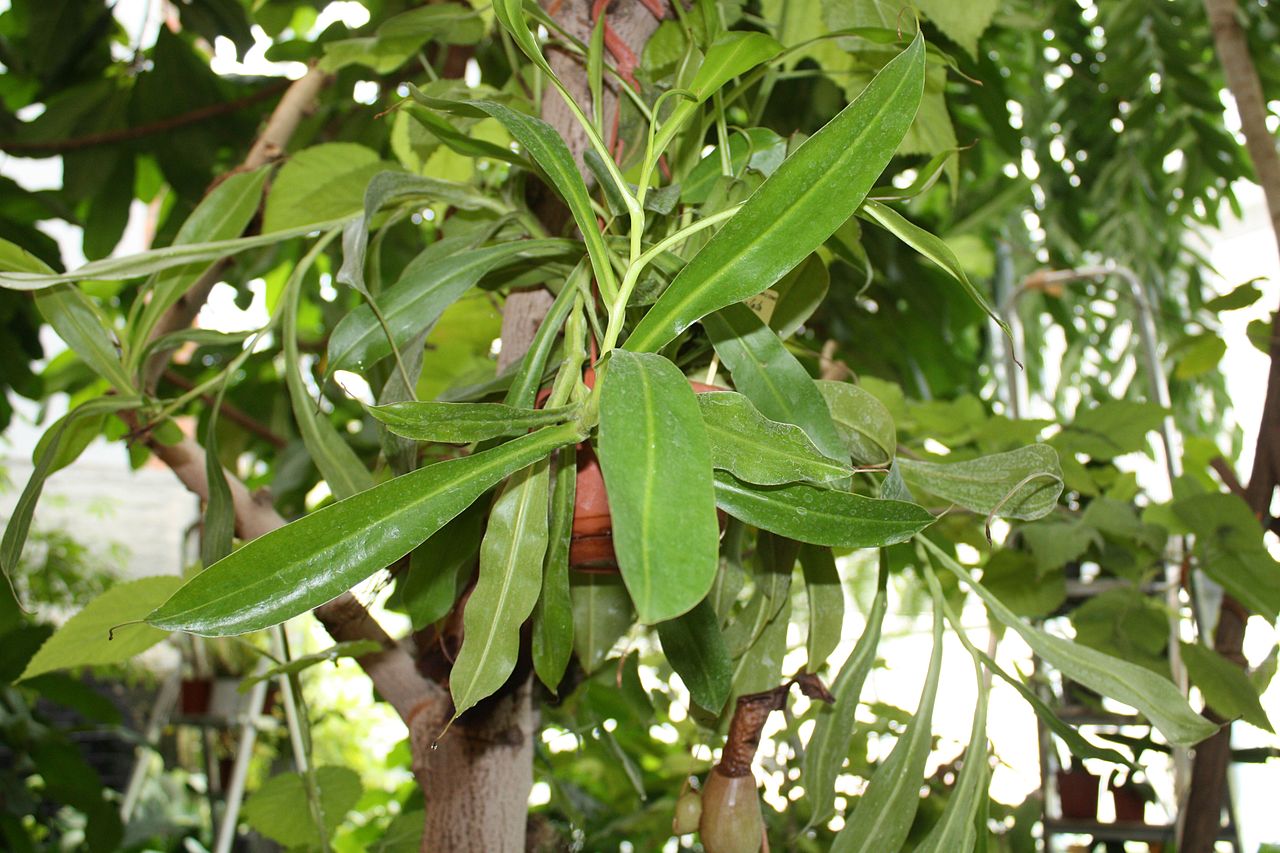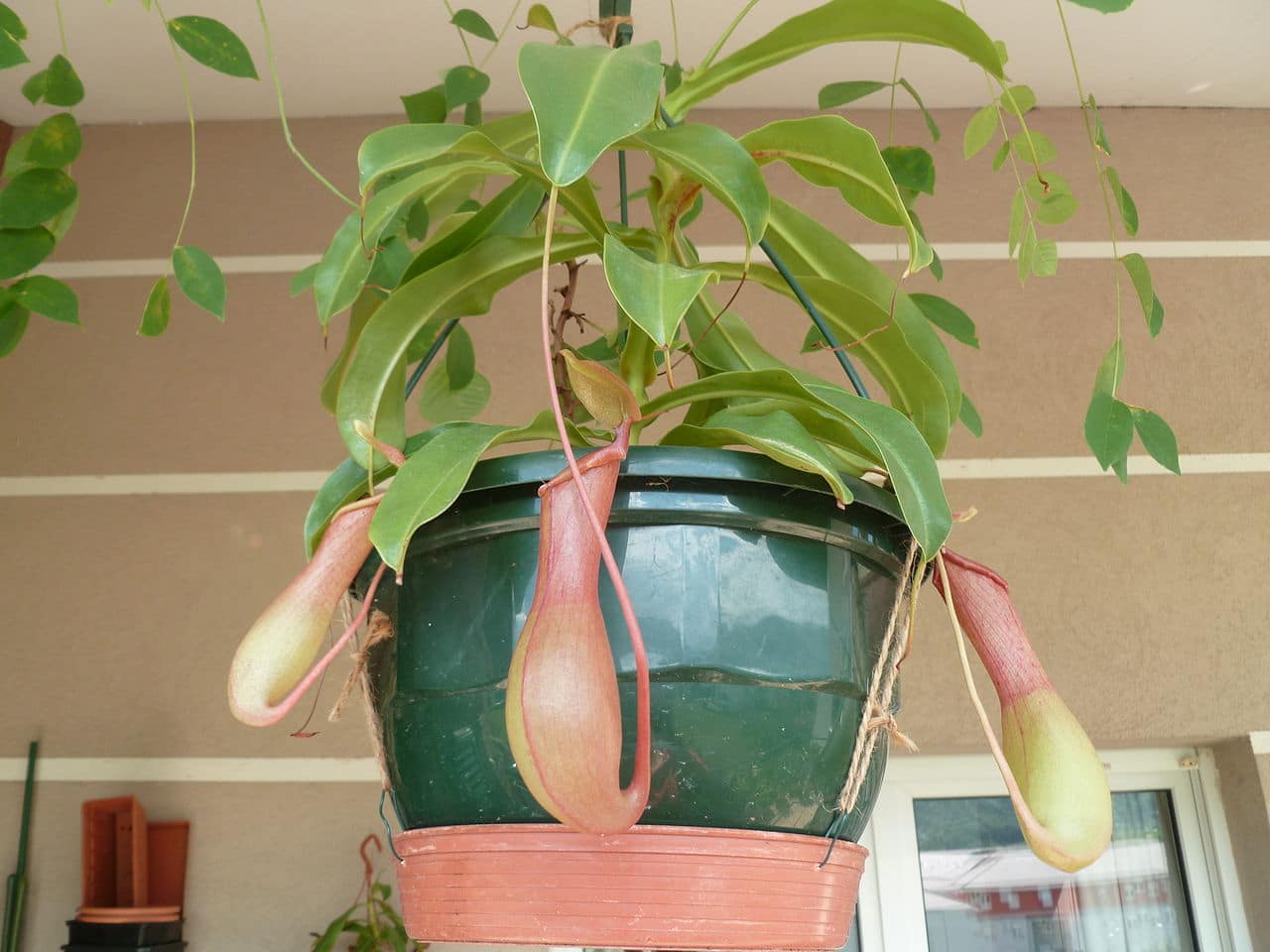
Image - Flickr / Gery Singer
La Nepenthes alata it is one of the most cultivated tropical carnivores. Their traps are very unique, adopting the shape of jars of a very striking red color. In addition, it can be used to decorate the interior of the house, as long as the room meets a series of conditions that we will tell you below.
And if the climate is mild or if you want to enjoy outside during the warm months of the year, it is sure to look great on a small high terrace table, or on a balcony protected from the sun.
Origin and characteristics of Nepenthes alata

Image - Wikimedia / Anneli Salo
It is a carnivorous plant belonging to the genus Nepenthes endemic to the Philippines characterized by developing leaves lanceolate to ovate, with a sharp or attenuated apex, green in color and about 10-15 centimeters long by 2-3 centimeters wide.
The flowers sprout from a long stem, and are tiny, yellowish-green in color. And the traps, without a doubt its main attraction, are shaped like a jug inside which we find a liquid substance, which is where the insects that fall when sliding from the edge of it downwards drown.
Has a climbing habit, being able to reach a height of up to 4 meters.
Hybrids
It is a species that easily hybridizes with others naturally. Thus, these hybrids are known:
- Nepenthes alata x Nepenthes burkei
- Nepenthes alata x Nepenthes ventricosa: giving rise to Nepenthes x ventrata
- Nepenthes alata x Nepenthes mirabilis: giving rise to Nepenthes x mirabilata
- Nepenthes alata x Nepenthes pulchra
- Nepenthes alata x Nepenthes x merrilliana: giving rise to Nepenthes x merriliata
What are the care you need?
Having an Nepenthes alata Well healthy and well cared for is not difficult, but it is important that some things be taken into account:
Location
- Body exterior:: in semi-shade, in an area where it is exposed to non-direct sunlight for 3-4 hours. This way you can form your jugs normally.
- Interior- Ideal for large terrariums with special plant bulbs. It can also be had in bright rooms, with high humidity, of at least 60%.
Earth
It is grown in plastic pots with holes in the base, filled with a mix of peat moss or sphagnum moss with perlite in equal parts (on sale here).
Irrigation

Image – Wikimedia/Sylvain Bezy
Irrigation it must be frequent, because it does not resist drought. Generally, it should be watered 3 to 4 times a week during the summer, and 2 times a week the rest of the year.
Use distilled, osmosis, or rain water as long as the latter is not contaminated.
Subscriber
You never have to pay. The Nepenthes alata It feeds on small insects, such as ants, mosquitoes or flies, from which it digests its nutrients.
Multiplication
It can be multiplied by seeds and leaf and stem cuttings in spring:
Seeds
If your plant is flowering, you can get seeds from it as it produces both male and female flowers. To do this, you just have to pass a small brush through them, ensuring that all of them receive pollen from all of them. In a few weeks you will see that the fruit, and therefore the seeds, have finished maturing.
It will be then when you can sow them in plastic pots with a mixture of blond peat and perlite in equal parts, previously moistened with distilled or rain water. Then, it will only be left to put them in an area where the temperature remains between 10 and 21ºC.
After about six weeks they will germinate.
Cuttings
It is the most used method, because it is quick and easy. For it, cut stems that contain at least 2 points from where the branches of the plant sprout. Then, they are planted in pots with blond peat and perlite mixed in equal parts previously moistened with distilled or rain water.
Finally, it is placed in semi-shade, where the temperature remains between 10-21ºC.
In order to prevent fungi from appearing, cuttings and plants should be treated with fungicides.
Transplant

Image – Wikimedia/Gere72
If you see that the roots are coming out of the drainage holes, or if it has already occupied the entire pot, you will have to transplant it to a larger one in spring.
Plagues and diseases
It's pretty sturdy overall, but during the summer some cochineal it could damage it. If so, you can remove it with a brush soaked in rain or distilled water.
Rusticity
La Nepenthes alata it is a carnivore that does not resist frost. The cold will not hurt you much, but if the temperature drops below 5ºC you will have a hard time. So, It can only be grown outdoors all year long if the temperature never drops below 5ºC., although the ideal is that it does not drop below 10ºC.
What uses does the Nepenthes alata?
It is a plant that is used only as ornamental plant, whether for gardens or interiors. It is not difficult to care for, and it also has a very high ornamental value, especially when it produces its traps.
What did you think of this carnivorous plant? Did you know her?
Very good information, it is complete, it is a great help
Thanks for your comment, Angela.
The bags or traps were all removed and I cut them. How can I help her recover? Thank you.
Hello Silvia.
We recommend that you provide the care that we explain in the article. Nepenthes is a carnivorous plant that needs heat and humidity, since it has a hard time in dry environments.
In addition, it has to be irrigated with rainwater or distilled water, since if it has lime it suffers damage.
Greetings.
Hello, my plant grew a lot and I have the problem that the Búcaros dry out, cut them and come out again, I don't know if that's correct, another doubt is that the Búcaros on the outside have small drops of molasses, but I don't see a trace of cochineal It is normal? Greetings
Hello isbael.
By 'bucaros' you mean the traps? If they dry out, it is because the plant lacks moisture, it can be in the ground and / or in the environment. If the area where you live is very dry, with low humidity - this happens when you live far from the coast, more inland - you have to spray the leaves and traps with distilled water.
The drops you say, yes, it is normal. 🙂
Greetings.
Thank you very much, I already changed it to a more humid location, and the sticky drops had me super worried
Thanks to you, Isabel. 🙂
It can only be watered with that type of water, can't it be with mineral water?
Hi Aurora.
If it is from Bezoya or Bronchales, yes.
A greeting.